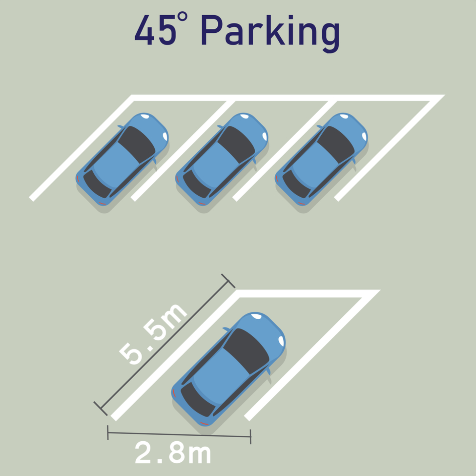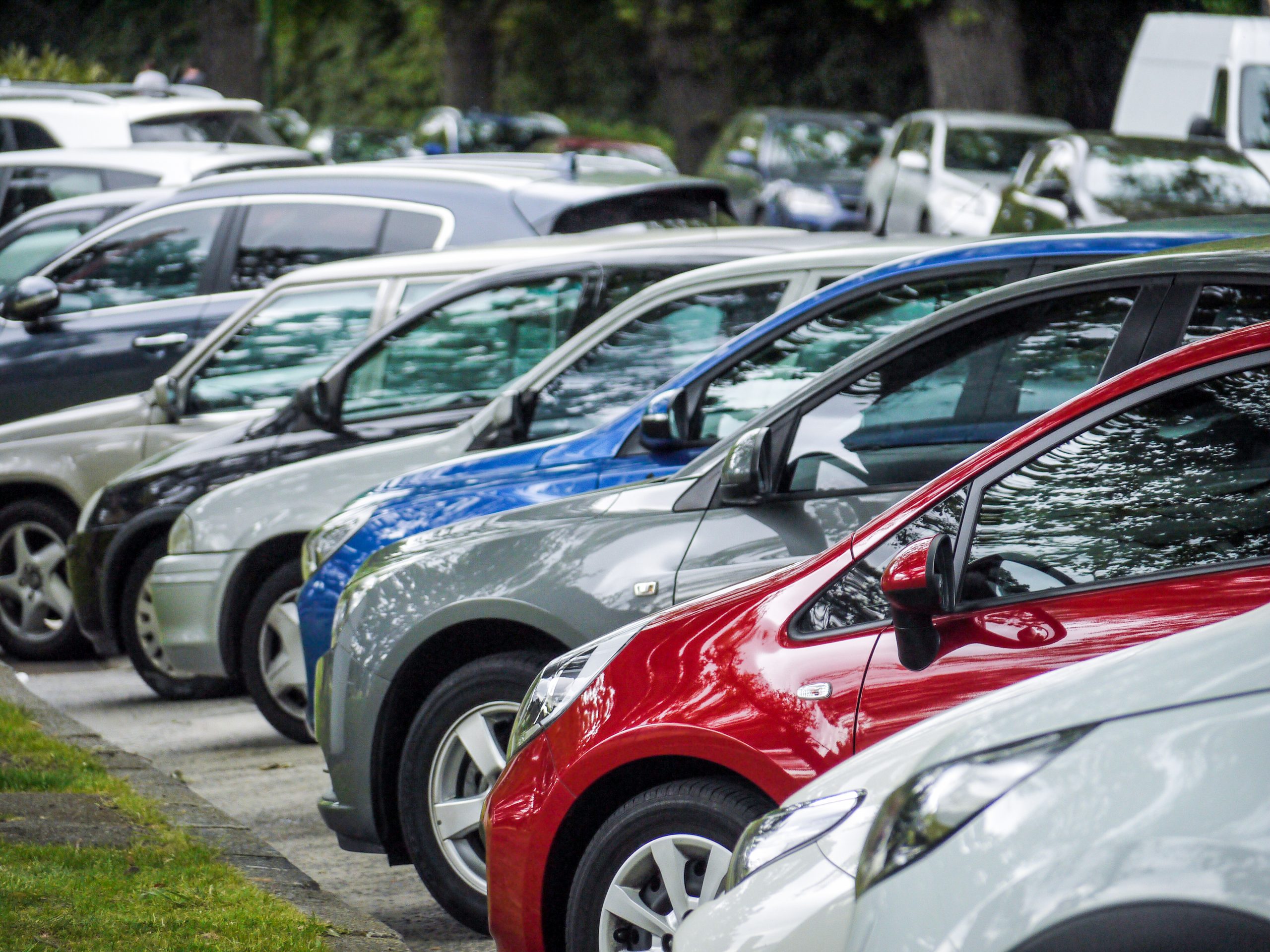Angle Parking

Angle Parking
If a city or town needed more and safer parking spots, most people would probably think of adding extra lots and garages to accommodate more vehicles. However, in many places, however, angle parking, and especially back-in angle parking, could be the answer.
Angle parking is a useful and often safer way of adding parking spots where space permits. For example, in the city of Sarnia, Ontario, a 2019 pilot project to modify parking on a section of a major road was designed to calm traffic, increase parking spots, and make the roads safer.
As a CBC article from July 2019 states, the pilot project was based on a similar project on Bannatyne Avenue In Winnipeg. When cyclists asked for more bicycle lanes, the city altered one section of the street to introduce angle parking. This kind of parking is good on wide streets, as it can increase the number of parking spots without significantly impeding traffic.
Benefits of Angle Parking
In addition, angle parking helps to contribute to safety. It has a calming effect on the flow of traffic as it gives the impression of narrower streets, thus encouraging drivers to be more cautious.

Besides calming down traffic, angle parking uses space more efficiently than other styles of parking. Tyler Kula notes in his July 2010 article in the Sarnia Observer that, even with only the changes to the main street, angle parking had already added an extra fifteen to twenty spaces for vehicles.
As the Parking Network explains, angled parking spots can be narrower than perpendicular spaces because maneuvering in and out is usually easier. Normally, angled parking is aligned with the flow of traffic, allowing drivers easy access to the spots.
Some angle parking allows drivers simply to drive in, while others requires them to back into the spot. Although each method has its uses, back-in angle parking has some distinct advantages. For example, in a shopping district, drivers are likely to want to gain access to the trunks of their vehicles. Having the back of the vehicle against the curb allows drivers to gain access to the contents of the trunk without the danger of being hit by a passing vehicle. In addition, back-in parking makes the departure easier, as the driver can simply look for traffic and drive away when it is safe.
How to Park at an Angle
Like any driving technique, accurate and safe angle parking takes practice. The Alberta.ca website notes that most angle parking is set at forty-five degrees to the curb. The first step in angle parking is to signal an upcoming turn into the direction of the parking space.

Next, while maintaining a distance of about 1.5 metres from the parked vehicles, the driver should look for the moment when the left side of the vehicle to the right of the parking space becomes visible. At that point, the driver should turn the steering wheel sharply to the right and move ahead slowly, being careful to stay in the middle of the space.
At about the midpoint of the space, the driver should straighten out the wheels and continue pulling forward. It might be necessary to pull out again slightly and move back and forth if the vehicle is too far to one side of the space, which could make it difficult for other divers to park properly.
Alternate Angled Parking Technique
Reversing out of an angled parking spot can be difficult, especially on a relatively busy street. However, the driver can just reverse the steps for pulling into the parking spot, while watching carefully for traffic.
Backing into an angled parking spot puts the difficult task at the beginning rather than the end. The Manitoba Public Insurance website gives some tips on this technique, which drivers can learn and practice until the task becomes easier.
Reverse Angle Parking Techniques
After signalling to show an upcoming parking maneuver, the driver should line up the vehicle’s back bumper with the driver’s side bumper of the other vehicle. The driver should then steer sharply in the direction of the parking spot and slowly move into place. At that point, minor adjustments might be necessary.
As with all parking, drivers may have trouble with moving into exactly the right spot on the first try. It may be necessary to move backwards and forwards or to one side to find the right position. Leaving the vehicle as straight and close to the middle of the space as possible will help make the best use of the parking spot.
Staying within the line markings on the road is important, but not crowding other vehicles is equally vital. If another vehicle is on or over the line, it may be necessary to park slightly over the next line to avoid possible problems when the other vehicle’s occupants try to open their doors.
Finding the Right Spot
In this regard, looking for the right parking spot is important. If possible, it is best to choose one that is among similar-sized vehicles to avoid being crowded or being unable to see oncoming vehicles. For example, the driver of a smart car should try to look for small-to medium-sized cars to park beside rather than parking next to a truck or other large vehicle. Although this will not always be possible, it is a good idea to try to match the vehicle’s size with its surroundings.
As with perpendicular parking, watching for the curb is essential for angle parking. Drivers need to ensure that the end of the vehicle is close to the curb without extending too far over onto the sidewalk or scraping the undercarriage or the bumper of the vehicle against the curb. Checking to see how far other vehicles have pulled forward can help.
As with any type of parking, drivers should look for signs at the side of the road giving them instructions. Even if the lines on the road have worn off or been covered by snow, drivers should be able to discover from a nearby sign whether angle parking is required and if so, in which direction.
Some drivers may never encounter angle parking, but it is a useful technique to know. Learning it is a good idea for all drivers.
